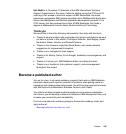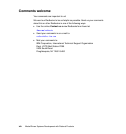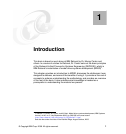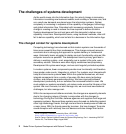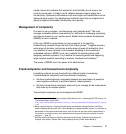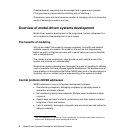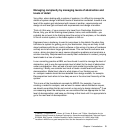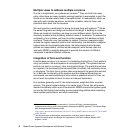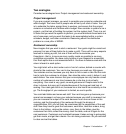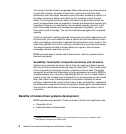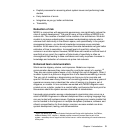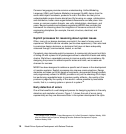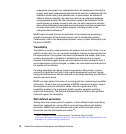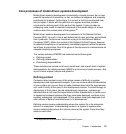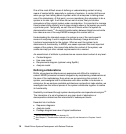Chapter 1. Introduction 7
Two analogies
Consider two analogies here: Project management and restaurant ownership.
Project management
If you are a project manager, you want to complete your project on schedule and
within budget. You have a set of people who will carry out a set of tasks. Your job
is to schedule the tasks, assign them to workers, and ensure that the project
remains on schedule and finishes within budget. Now consider a system to be a
project—not the task of building the system, but the system itself. There is a set
of tasks that you want the system to perform, you must distribute those tasks to a
set of resources, and you want the tasks to be accomplished within a certain
schedule, budget, and other constraints. Reasoning about this distribution
problem is a core pillar of MDSD.
Restaurant ownership
Now imagine that you want to start a restaurant. Your goals might be varied and
personal, but one of them better be to make a profit. There will be many aspects
involved in making a profit, but one of them will be to maximize your
throughput—that is, to serve as many quality meals as possible to as many
customers as possible. You have many options at your disposal to accomplish
this. Each option has a cost associated with it. You have to balance costs with the
return inherent in each option.
You might start with a short-order cook in front of a stove, behind a counter with
stools for the customers. Your rent is low, because you need very little space.
Your salaries are low, because you only have to hire a cook or two. But the cook
has to invite the customer to sit down, then take the order, cook it, deliver it, and
wash dishes. You soon discover that your one employee can only handle a small
number of customers at one time, because he or she has to do virtually
everything. Your cook is very good, so word gets around. People come to the
diner in droves, but soon get frustrated because of the long wait and lack of
seating. Your cook gets burnt out, because he or she has to be constantly on the
go. The throughput of your restaurant is limited, as are its profits.
You could add tables and some wait staff. Your rent has gone up because your
space has increased, as have your salaries because your staff is increased, but
you can increase the output of the cook because he or she can focus on the
cooking, and the throughput of the restaurant through the division of
responsibilities. Still, you will likely be constrained by the capabilities of the wait
staff. Now they have to greet the customers, seat them, take their orders, bring
them to the kitchen, retrieve the orders, carry them to the tables, give the
customers their bills, collect the money, clear the table, and set it again for the
next customers. Customers are frustrated because it takes so long to get seated,
get their meals, and get their checks. You risk losing customers. So you add staff
to clear and set the tables.



